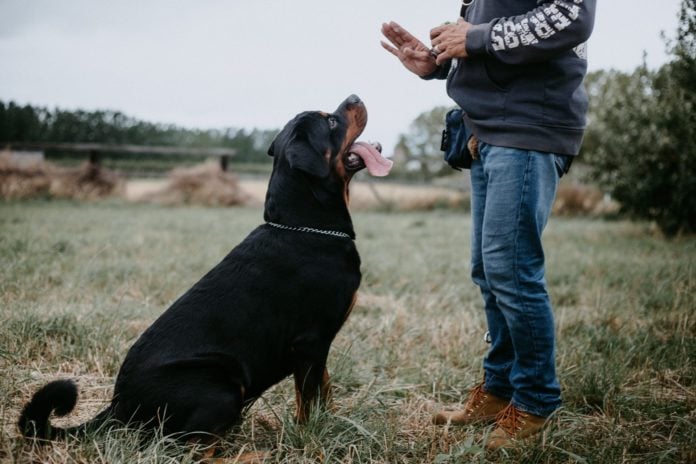I am a veterinarian, briefly a hunt trial judge, a dog obedience competitor, and a dog trainer. I loved winning ribbons and putting titles on the dogs I had; before children and work took over. But I also cared about my pets having manners, this made me want to take my partner, my dog, everywhere I went. There are many things an obedience class doesn’t train.
A child can be the most precocious beautiful genius on the planet but who wants to be in the same room if he or she is a little horror? People can feel the same about your beloved dog. Manners can also have safety consequences. Perfect heeling on a single command is expected in the competitive obedience ring but not in everyday life. You want to walk with your pet on a loose lead, not hitting the end of the leash charging things. Teach your pet not to cut across a bicyclist or walker’s path on the sidewalk. Flexi-leashes allow many people to think their pet is controlled but I have seen people, other animals, and the pet on the flexi injured when the owner couldn’t control the leash quickly. Two cases I treated involving flexi-leashes include a big dog on a flexi attacking a little dog and another case where the small dog on the flexi ran behind a car backing out of a driveway while its owner was trailing unseen behind a hedge. Animal bylaws typically read that a dog owner must control their pet, so even if technically a pet is on a leash, an owner could remain liable for injury to someone.
I once babysat a young Labrador that, as I descended a steep set of stairs to a concrete floor, would suddenly leap around me from behind hitting my knees and then the end of the leash in front of me. I almost had two serious falls. I train my dogs from puppyhood not to pass a person on stairs going up or down. This training protects our fragile elderly family members. I train my dogs to stand back as I open a door allowing me to either lead them through the door or order them through ahead of me once I know the other side is safe.
Get out of my way. Dogs seem to love being underfoot. The larger ones especially love to lie across doorways rising to their feet just as you step over them. As puppies, I deliberately walk into my dogs. I scuff my feet so as not to hurt them, but I will walk into a puppy in my path gently, so they learn to move aside praising them when they do move. I have had people comment in my house and when I visit them about how polite my dogs are about moving aside for people. The big dogs can knock you down and the little dogs can be inadvertently hurt if they get underfoot unseen. These rules don’t apply to my elderly canine companions, but it helps them protect themselves later in life.
Don’t leap into me when I have a bowl of food or water. I recommend training all dogs, not just those with dominance problems, to sit or down until the bowls are down and they are released with a command.
Don’t jump in or out of the car without permission. I want a chance to get a towel to wipe those muddy feet before seventy pounds of Labrador leaps in the back of my truck, or the poodle’s tracks cover my upholstery. More importantly, if I open the tailgate in a parking lot, I don’t want anyone leaping out into the path of a vehicle.
I could go on with a multitude of examples limited only by time and my imagination. None of these things will ever be taught in a formal obedience class but good manners will always improve the quality of your relationship with your pet making it easier to include him in all your fun activities. The same teaching principles of consistency, timing, and praise apply to teach manners and should start when the new family member arrives the very first day. I try to love all kids and dogs, but everyone knows some are a heck of a lot easier to love.









